
Grasses Around Las Vegas, Vegetation Around Las Vegas
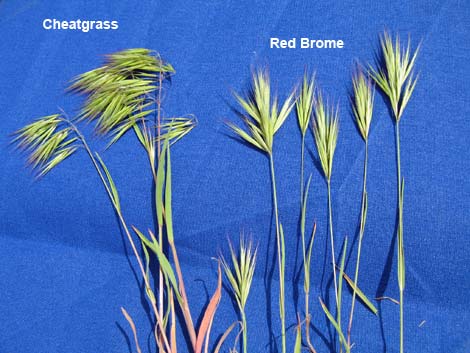 Drooping flowering heads of Cheatgrass (left) versus upright flowering heads of Red Brome Grass (right) |
General: Cheatgrass (Bromus tectorum) is an invasive exotic species (native to Eurasia) that has disrupted Sagebrush ecosystems in the Great Basin Desert and has invaded higher elevations in the Mojave Desert. This grass grows with upright stems and seedheads that fall to the side. Cheatgrass is a common component of vegetation communities in the Great Basin Desert, and it can be found in the mountains around Las Vegas in the Upper Sonoran (Pinyon-Juniper Woodland) and Transition (Yellow Pine Forest) life zones. Cheatgrass grows densely under native shrubs and in the open spaces between shrubs. This grass sprouts early in the spring, grows quickly, then sets seed and dies, leaving a dense carpet of dry grass that carries fires in areas that once rarely burned because the shrubs were spread too far apart. Because it burns so easily, Cheatgrass is changing the Great Basin Desert from a shrub-dominated landscape to an open grassland. Cheat Grass is related to Red Brome Grass, which is causing similar problems in the Mojave Desert. |
 After a forest fire, Cheatgrass grows quickly and is ready to burn again |
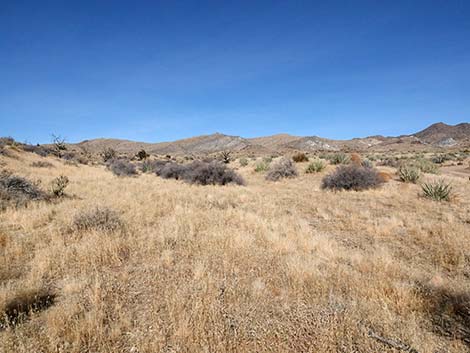 After a desert fire, Cheatgrass regrows quickly and is ready to burn again |
 |
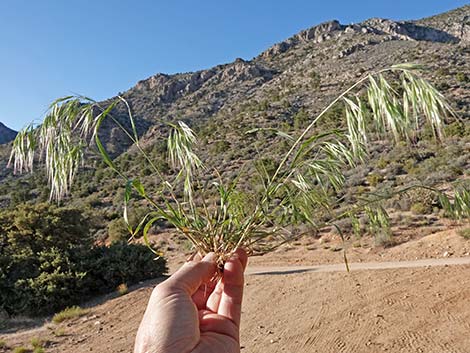 |
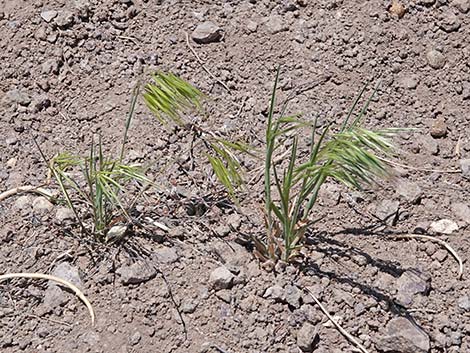 Cheatgrass flowers quickly, here after only a few leaves sprouted |
 Cheatgrass in roadside habitat (Mt. Charleston area) |
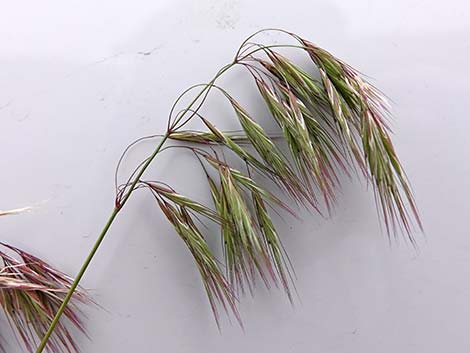 The flowering heads of Cheatgrass droop and hang down |
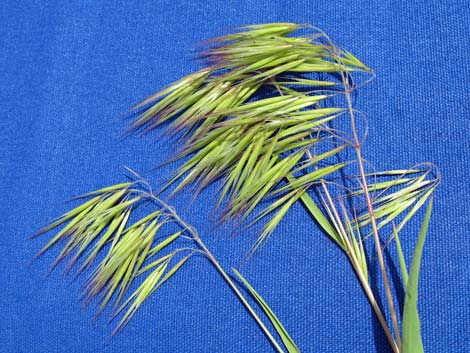 The flowering heads of Cheatgrass droop and hang down |
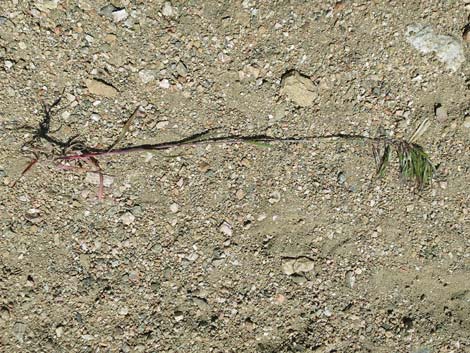 |
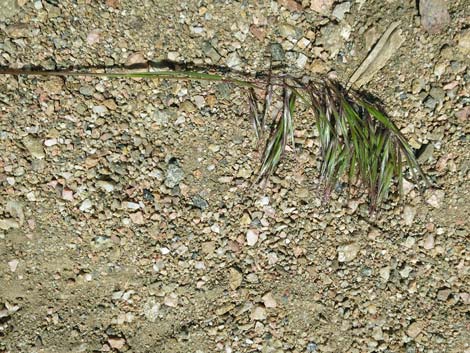 |
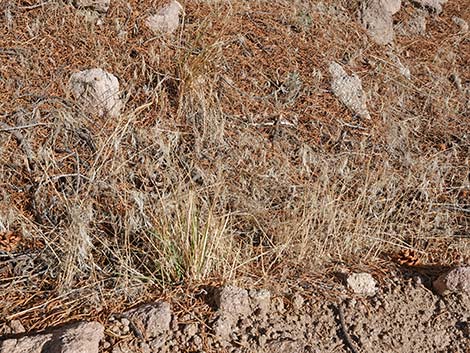 Cheatgrass persists as a flammable ground cover during winter |
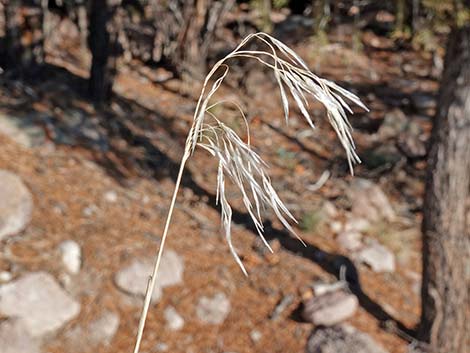 Spent flowerhead during winter |
Note: All distances, elevations, and other facts are approximate. Names generally follow the USDA database.
![]() ; Last updated 240623
; Last updated 240623
| All Grasses | Plant Species Index | Glossary | Copyright, Conditions, Disclaimer | Home |